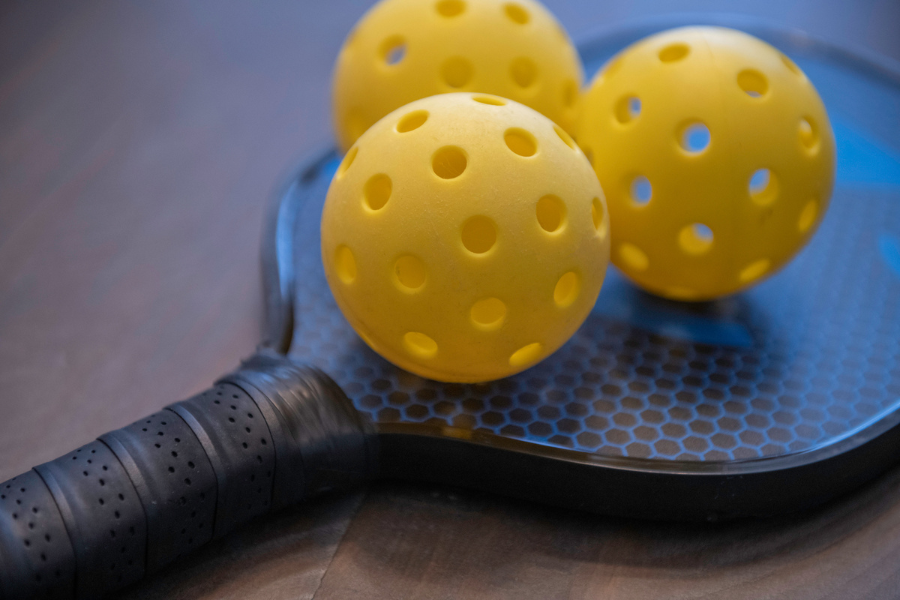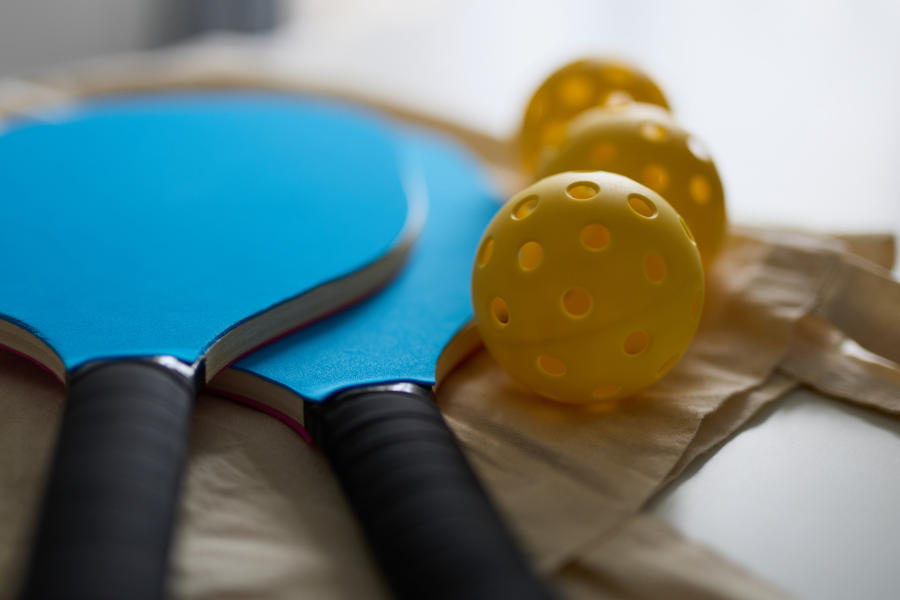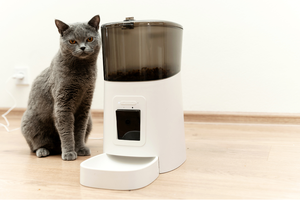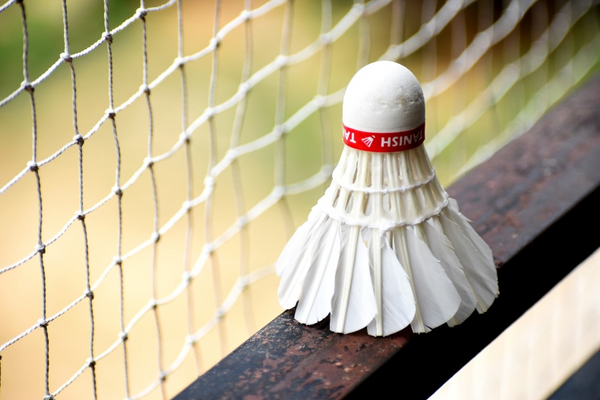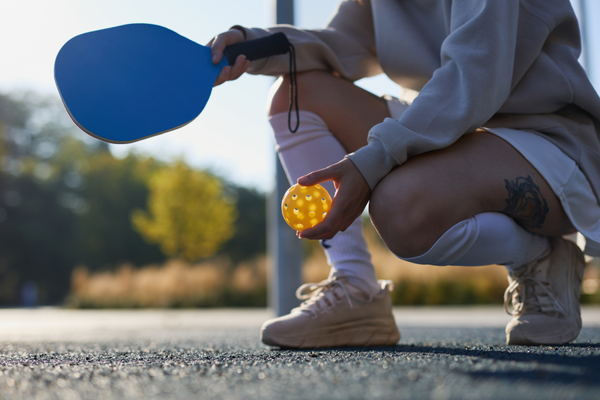Ready to dive into a world where tennis, badminton, and ping-pong are all rolled into one? Welcome to Pickleball! This sport was born in 1965 when three dads - Joel Pritchard, Bill Bell, and Barney McCallum - decided to invent a game that would cure their kids' boredom. Little did they know, they were about to create a sport that would take the world by storm!
Key Takeaways
- Gear up for pickleball success with the right paddle, clothing, and court.
- Master the rules to outplay your opponents and excel in singles or doubles.
- Connect with local players and learn from the pros to improve your game.
Pickleball Essentials: Gear Up for the Game
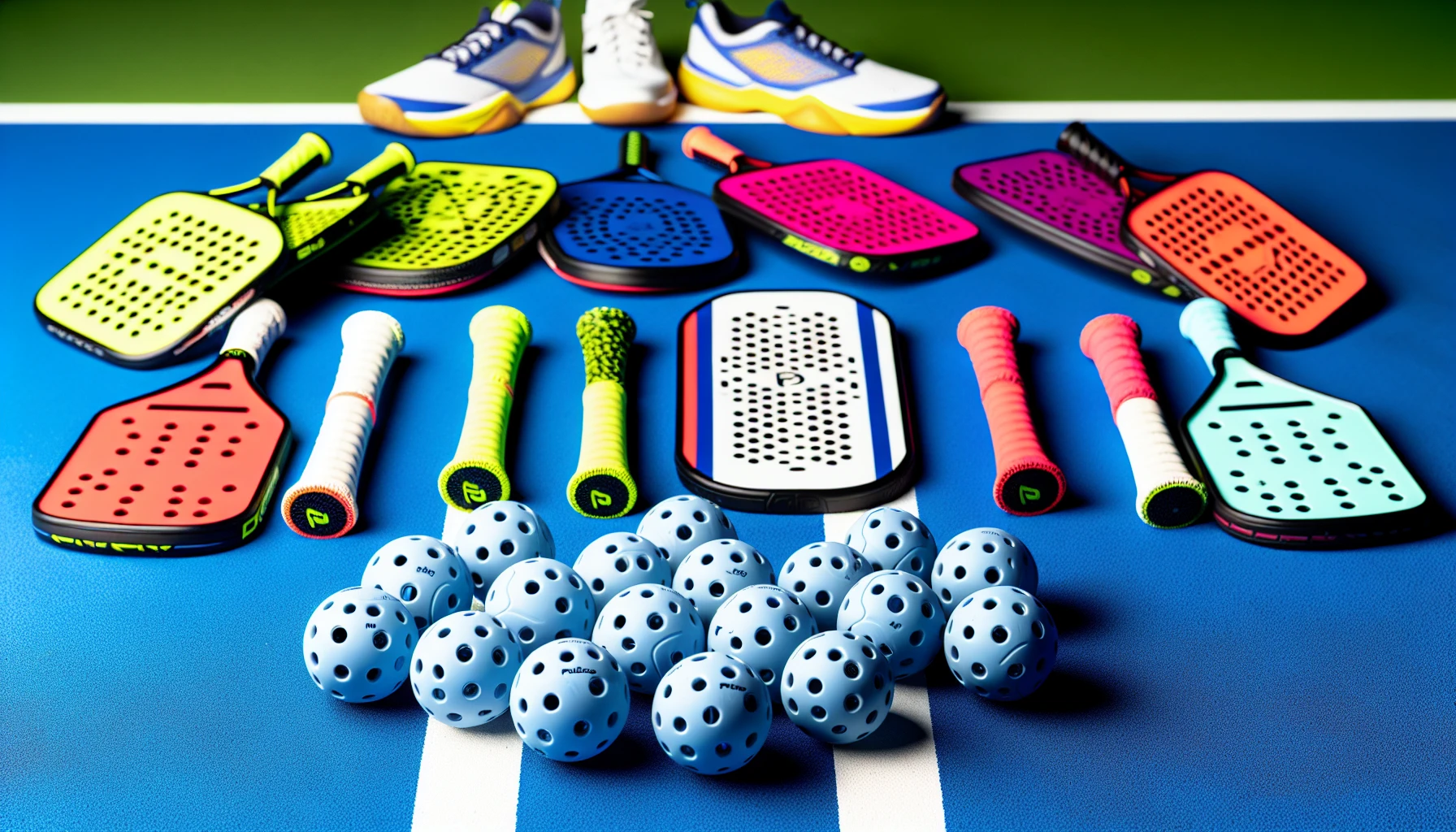
Beginning your pickleball journey requires appropriate equipment, attire, and a proper court to play on. Having a quality paddle, comfortable clothing, and proper shoes will help you perform better.
Next, you’ll need to locate a pickleball court near you, which can often be found at local recreational centers or tennis facilities. Equipped with suitable gear and a proper court, you’re set to engage in the thrilling game of pickleball.
Choosing Your Pickleball Paddle
Selecting the perfect pickleball paddle involves choosing from various materials, such as:
- Carbon fiber: lightweight and provides excellent control
- Graphite: more durable and offers more power
- Fiberglass: offers a good balance of control and power
- Composite: a combination of different materials, offering a mix of control, power, and durability
Each type of paddle head offers unique characteristics that cater to different playing styles. There's a wide range of pickleball paddles, each with unique features that can enhance your gameplay. If you're looking to improve your game, the right paddle is key. For a detailed guide on choosing a carbon fiber pickleball paddle, be sure to read our article here.
Dressing for the Match
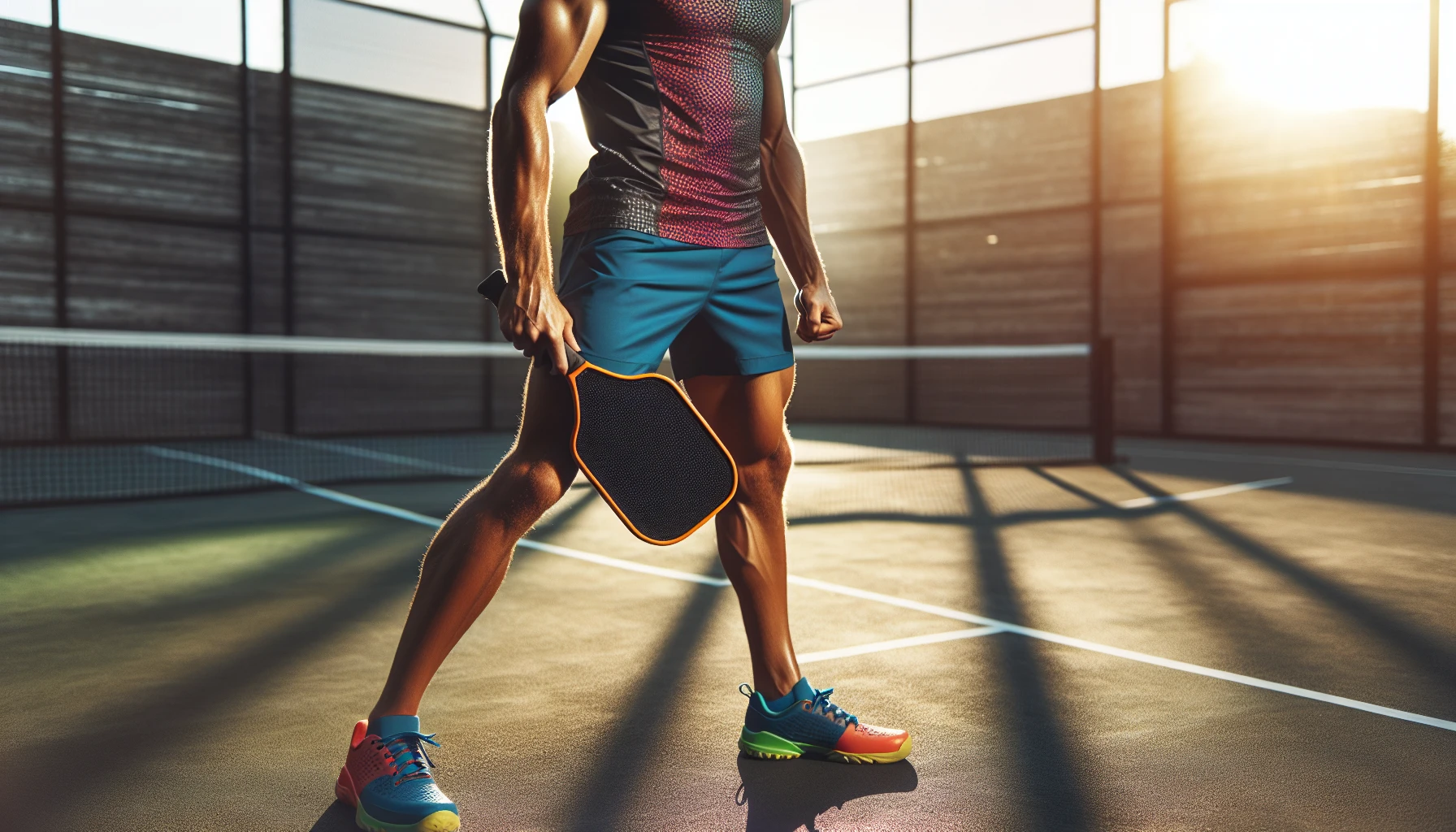
Choosing the right attire for pickleball can greatly impact your performance. Opt for comfortable clothing made from moisture-wicking materials like polyester and nylon that will keep you cool and dry during intense matches. Avoid cotton, as it tends to hold moisture and can make you feel weighed down.
Here are some additional tips for choosing pickleball clothing:
- Loose-fitting garments: Allow for freedom of movement and prevent chafing.
- Shorts or skirts: Provide more flexibility than pants, especially for lunges and dives.
- Comfortable shoes: Choose supportive shoes with good traction to handle quick changes in direction.
- Sun protection: Consider a hat and sunscreen, especially if playing outdoors.
Locating a Pickleball Court
Securing a pickleball court for practice and play is key to skill improvement and an enjoyable game. You can start by checking with your local YMCA, tennis centers, or other recreational facilities. Additionally, online directories and websites can help you locate nearby courts. Don’t forget to check if you need to bring your own net or if one is provided at the court.
If you are unable to locate a place to play, have ample space at home, and are interested in setting up your own home court, here's a simple guide to help you get started:
- Space Requirement: Per the USA Pickleball Rule Book, a pickleball court should ideally be 34 feet wide by 64 feet long, with actual playing lines measuring 20 feet by 44 feet. Ensure sufficient space if setting up in your backyard.
- Marking the Court: Use chalk or temporary marking paint to outline the boundaries of the court. Make sure to mark the service areas (10 feet by 15 feet each) and the non-volley zone, also known as the kitchen, (7 feet on both sides of the net).
- Setting up the Net: The net should be placed in the center of the court, dividing it into two halves. The net height should be 36 inches at the sidelines, and 34 inches high in the middle.
- Choosing the Right Surface: Ideally, the court should be flat and made of a hard surface like concrete or asphalt for best playability. However, grass or dirt can also be used if a hard surface is not available.
Keep in mind that a good home pickleball court closely mirrors official dimensions. This will help you practice effectively and ensure you're ready for competitive games.
The Heart of the Game: Understanding Pickleball Rules
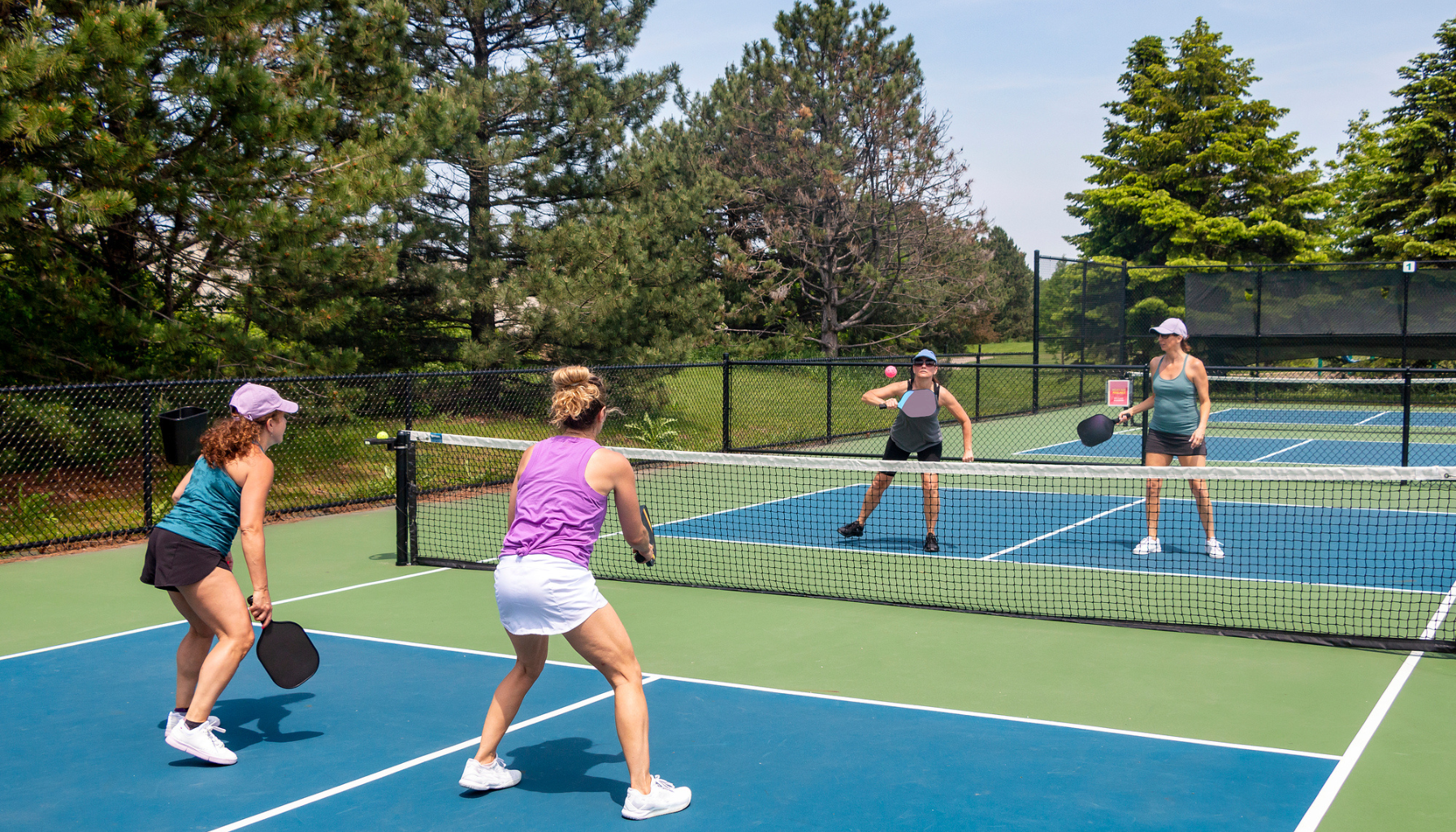
Before engaging in the thrill of pickleball, understanding the basic rules that govern the game is a must. Knowing how to serve, navigate the non-volley zone (also known as the kitchen), and score points will help you become a more skilled and strategic player.
Serving Strategies in Pickleball
A well-executed serve can set the tone for a winning rally in pickleball. To gain a competitive edge, consider the following tips for serving:
- Serve deep to your opponents’ backhands
- Use power and spin to make your serve more challenging to return
- Mix up your serves to keep your opponents guessing
Remember to serve underhand and make contact with the ball below your belly button as required by pickleball rules. Whether it is the first serve of the match or you are well into the serving sequence (the order and court position for serves) you will want to keep your opponents guessing and on their toes! Score those aces and quickly accumulate points while your server continues serving until it is the other team's turn.
The Non-Volley Zone
The non-volley zone, or kitchen, is a critical area of the pickleball court that has a significant impact on the game. This 7-foot zone on either side of the net prohibits players from hitting a volley (hitting the ball before it bounces) while standing within it. Abiding by the non-volley zone rule not only ensures fair play but also adds a strategic element to the game, making it more enjoyable for both defenders and attackers.
Bear in mind that during the intensity of the match against the opposing team, not even the tip of your toe can cross the kitchen line when volleying!
Scoring Success
In pickleball, points can only be scored by the serving team. Before each serve the score is called using 2 or 3 numbers:
- The first number represents the serving team’s score
- The second number represents the receiving team's score
- The third number is used in doubles games and indicates which team partner is serving (in doubles each partner gets to serve until a volley is lost before service goes to the other team).
- An example: 4-5-2 means the serving team has 4 points, the receiving team has 5 points, and the serving team has already faulted with partner 1 and partner 2 is serving
The Serve: Initiating Play

Serving in pickleball is more than just getting the ball over the net; it’s about initiating play and gaining an advantage from the start. Proper serving techniques and positioning are crucial to achieving success in this fast-paced sport. Mastering the serve sets the stage for winning rallies and ultimately, the game.
Proper Service Techniques
The correct way to serve in pickleball is with an underhand stroke below waist level. To enhance your service, try:
- Serving to your opponent's backhand
- Attempting a mix of serves to the back end of the court as well as using a drop serve
- Experimenting with lob serves, driving serves, and using spin
Practicing these techniques enables you to improve and refine your serve which will give you a competitive edge on the court.
The Importance of Positioning
Proper positioning is vital during a serve and throughout the game. Standing behind the baseline when serving ensures your serve is legal and allows for easy entrance into the play zone.
During gameplay, strategic positioning enables you to move around the court effectively in anticipation of your opponent’s shots. Your footwork and positioning will allow you to swiftly react to your opponent’s moves and maintain control over the game..
Rallying the Ball: Keeping the Game Moving
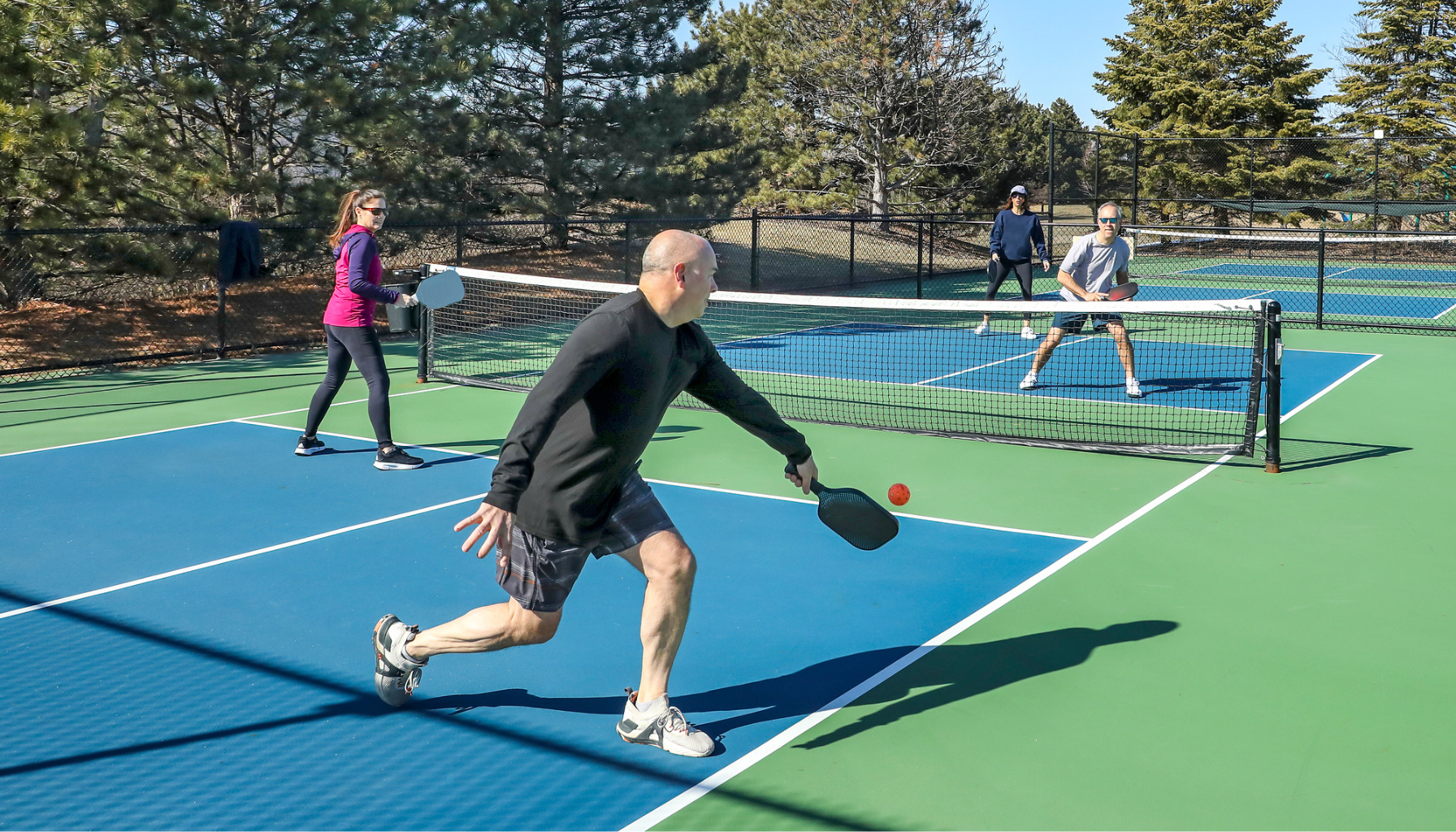
A successful rally in pickleball requires keeping the ball in play and adhering to the rules. Whether you’re volleying at the net or exchanging groundstrokes from the baseline, understanding the rules, such as the double bounce rule and avoiding faults and fouls, is essential for maintaining the flow of the game.
The Double Bounce Rule Explained
The double bounce rule is a fundamental aspect of pickleball. It requires that each team let the ball bounce one time at the beginning of any volley. Here’s how it works:
- The receiving team must allow the serve to bounce before hitting the ball back to the serving team. This is only required on the serve.
- The serving team must let the receiving team's first return bounce before they can hit the ball. This only happens on the return of the initial service.
- Once the ball has bounced on each side (double bounce) the ball can be hit out of the air (volley) or after bouncing.
Understanding and adhering to the double bounce rule, also known as the two-bounce rule, guarantees smooth gameplay and adds an element of strategy to your game.
The Kitchen
The "kitchen" in pickleball is a term colloquially used to refer to the non-volley zone, a critical area on the pickleball court that greatly influences gameplay and strategy. This zone extends seven feet on both sides of the net, running parallel to it, and encompasses the entire width of the court. The primary purpose of the kitchen is to prevent players from executing smashes or volleys (hitting the ball in the air before it bounces) too close to the net, which would give them an overwhelming advantage. The kitchen's unique role in pickleball sets it apart from other racquet sports by adding a distinctive strategic component.
While players are allowed to enter the kitchen at any time during play, they cannot volley the ball while in this zone or while their momentum is carrying them into or through it. This rule encourages longer rallies and a greater emphasis on skill and strategy over sheer power. Volleys can be made near the kitchen line, but players must be careful not to step on or over the line while doing so, as it results in a fault.
Faults and Fouls
As in any game, there are several faults and fouls that interrupt gameplay and will cause the faulting team to lose the volley. Here is a list of some of the faults and fouls you should be aware of:
Fault Examples:
- Foot fault: Contacting the non-volley zone line with either foot during the service motion.
- Double bounce: Not allowing the serve to bounce before returning it (receiving team) and not allowing the initial return to bounce before returning it (serving team).
- Volley fault: A term for hitting the ball out of the air when the double bounce rule is in play.
- High serve: Hitting the ball above waist level during the service motion.
- Net fault: The ball hitting the net.
- Out of Bounds: The ball lands outside the designated service court boundaries.
- Carrying: Holding the ball on the paddle for longer than a clean hit.
- Hindrance: Obstructing your opponent's ability to play the ball.
Foul Examples
- Unsportsmanlike conduct: Verbal or physical misconduct towards your opponent or other players.
- Equipment abuse: Throwing your paddle or deliberately damaging the court or equipment.
- Physical contact: Intentional contact with your opponent or their paddle.
Remember, good sportsmanship and fair play are essential in pickleball. Familiarize yourself with the rules and contribute to a positive playing experience for everyone.
Singles vs. Doubles: Pickleball Game Variations
Pickleball offers two exciting game variations: singles and doubles play. Pickleball singles games demand more movement and agility, making it ideal for players looking to test those skills. In contrast, doubles play reduces the amount of movement required on the court, making it more accessible for beginners and fostering teamwork.
Understanding the unique strategies and techniques for each variation allows you to master the game and fully enjoy pickleball.
Mastering Singles Play
In singles pickleball, strategic plays can give you the upper hand. Here are some tips:
- Serve deep in the court
- Target your opponent’s backhand
- Keep passing shots low
- Make quick transitions between offense and defense
- Anticipate your opponent’s moves
- Cover the court effectively
By following these strategies, you can maintain control and pressure throughout the game and increase your chances of success in singles play.
Doubling Up: The Team Approach
Doubles play in pickleball is an exhilarating team effort that requires effective communication and coordination between partners. By taking advantage of each player’s strengths and working together to cover the court, you can outmaneuver your opponents and secure victory. Remember, both players on a team get to serve, so make the most of each opportunity to score points.
Advanced Pickleball Strategies
Once you've got a handle on pickleball basics, it's time to step up your game. Perfecting your serve, controlling the kitchen, and strategic positioning can give you the upper hand on the court.
Maximizing Your Serve
Taking your serve to new heights involves a combination of power, spin, and accuracy. Serving deep to your opponents’ backhands, utilizing power and spin, and mixing up your serves will keep them guessing and increase your chances of success.
Controlling the Kitchen
Dominating the kitchen, or non-volley zone, is an essential skill for advanced pickleball players. By strategically positioning yourself near the kitchen line, you can:
- Limit your opponent’s power shots
- Create opportunities for volleys and putaways
- Take charge of the game
- Force your opponents into defensive positions
By honing your footwork and positioning in the kitchen, you can dictate the game and put your opponents on the back foot, enhancing your pickleball prowess.
Finding Your Community: Joining the Pickleball Scene
Connecting with fellow enthusiasts offers valuable insights, new techniques, and enjoyment of the social aspects of this engaging sport, all while benefiting from personalized content and ads tailored to your interests.
Connect with Local Players
Finding other pickleball players in your area is easier than ever, thanks to:
- Apps like PicklePlay and Pickleball Buddy
- Searching for local pickleball groups and events on Meetup
- Attending local clubs and events to meet like-minded players
Learning from the Pros
Learning from professional pickleball players can significantly improve your game. Here are some ways you can gain insights and tips from the experts:
- Attend pickleball camps where professionals provide hands-on training and share their experiences.
- Participate in clinics that focus on specific aspects of the game, such as serving techniques or court positioning.
- Enroll in workshops where you can learn advanced strategies and techniques in a group setting.
- Work with a personal coach for tailored guidance and feedback on your gameplay.
By leveraging these resources, you're equipped to tackle the challenges of the sport and take your skills to new heights.
Summary
In conclusion, pickleball is an exciting and challenging sport that offers endless opportunities for growth and enjoyment. By mastering the basics, refining your serve, understanding the rules, and connecting with the community, you’ll be well on your way to becoming a skilled and passionate player. So gear up, hit the court, and embrace the fun and camaraderie of this exhilarating sport.
Frequently Asked Questions
Why did they call it pickleball?
The name "pickleball" is said to have been derived from one of the founder's family dog named Pickles. The story goes that Pickles would chase after the ball and run off with it during their games, leading the family to affectionately name the game after their playful pet.
What is the best way to learn pickleball?
The best way to learn pickleball is to master the fundamentals, focus on accuracy and routine, gain guidance from experienced players, and sign up for lessons.
